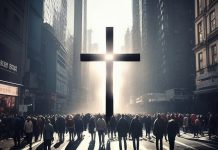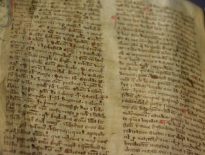The history of Brethren Assemblies begins in the 19th century, when groups of British believers began to be dissatisfied with the Anglican Church, which they saw as enslaved to the state and which they considered to be abandoning the fundamental principles of Christianity.
Initially not intending to establish a new denomination, they began to gather for worship in private homes, pursuing a Christian experience similar to that of the apostles’ day.
Ignoring denominational differences and resolutely rejecting the distinction between clergy and laity, the self-proclaimed “Brethren” believers focused on the study of the Scriptures, emphasising the understanding of the prophecies. They prayed together and practised breaking bread in simplicity each week, seeking a personal relationship with God and an informal worship led by the Holy Spirit.
The founder of the Brethren is considered the missionary physician Anthony Norris Groves (brother-in-law of the well-known pastor George Müller, nicknamed the “father of orphans”). Between 1826 and 1832, five groups of Brethren were formed in Dublin, Bristol, and Plymouth, the first permanent congregation being in Plymouth.
The most prominent figure in the movement was John Nelson Darby. Although at the beginning of a promising legal career, as a leading graduate of Trinity College in Dublin, Darby chose pastoral service after only four years as a lawyer. “I owed myself entirely to [God]. I longed for complete devotedness to the work of God,” he would later write.
Concerned with service to the poor, he became an Anglican priest in a country parish near Dublin, and was regarded as a dedicated pastor. However, after only two years, strongly disappointed by the formalism of the state church, Darby resigned his position, joining the Brethren movement. Darby believed that the Anglican Church had lost all notion of salvation by grace, that it had forgotten the biblical teaching about the role of the church, and that it was completely lifeless.
Without being an official leader of the group, Darby soon became its best-known representative. His 1828 pamphlet, “The Nature and Unity of the Church of Christ”, which summarised the beliefs and practices of the Brethren, was widespread. Darby established groups of Brethren in the United Kingdom and on the mainland, especially in French-speaking Switzerland, and also preached extensively in churches in Europe, North America, Australia, and New Zealand.
Darby’s theological legacy remains dispensationalism: the belief that human history is divided into seven periods (dispensations). In each of them, God acted differently towards His people. For him, history is a “progressive revelation,” comprising several stages of the divine plan of salvation. The present dispensation is one of waiting for the imminent return of Christ.
Darby revived, in a different form, the premillennialism of the early Christian centuries—the belief that the world would go from bad to worse until Christ returned and established a 1,000-year Kingdom of peace. The novelty of Darby’s system was the literalism with which prophecy was explained (especially the book of Revelation).
From his perspective, Israel and the church were distinct peoples of God, and the rapture of the church was to happen seven years before the second coming. During this time the antichrist, the “great tribulation,” and the battle of Armageddon would take place. At the rapture, Christ was to come for His saints; at the second coming, He would come with His saints.
Unlike other Brethren doctrines, the premillennialism Darby promoted has been widely embraced, becoming the dominant position in American evangelical Christianity to this day, even influencing U.S. foreign policy in the Middle East in terms of unconditional support for the state of Israel.
Beginning in 1846, due to differences of opinion between Darby and other leaders of the group, the Brethren Assemblies split into “Open Brethren” and “Exclusive Brethren”. The city of Bristol was the centre of the “open” branch, with the congregations of Gideon and Bethesda, while Plymouth hosted the believers in the “exclusive” branch.
Among the disputed doctrines were access to the Lord’s Supper (the first branch allows any believer to attend the Lord’s Supper, the other branch allows access to the Lord’s Supper only to community members who respect the teachings and practice of the community), children’s baptism, church apostasy, etc.[1]
Brethren Assemblies carried out a rich missionary activity abroad, especially in Central Africa, India, and Latin America. Communities of the movement can be found all over the English-speaking world and in most European countries.
In retrospect, Darby’s perspective on events at the end of history, though embraced by many, is viewed with suspicion by other scholars of Scripture. His literalist methodology led him to construct a detailed end-time scenario, a scenario strongly contested by other theologians.
Many Christians feel that Darby has forced the interpretation of Bible prophecy, and question eschatological concepts such as the secret rapture of the church.[2] However, the movement of the Brethren has the merit of rediscovering the original model of Christianity, through elements such as the communion of believers in small groups, lack of formal worship, missionary zeal, and lack of distinction between clergy and laity.
The movement did not lack criticism and detractors, but few spiritual people would deny that it was an honest attempt to return to the Holy Scriptures and that they were indeed like the salt of the earth to curb the apostasy of Christendom.[3]
Daniel Tudorie Jr. believes that the desire of the Brethren to return to the study of the gospel is a necessary quality for every disciple of Christ.



















